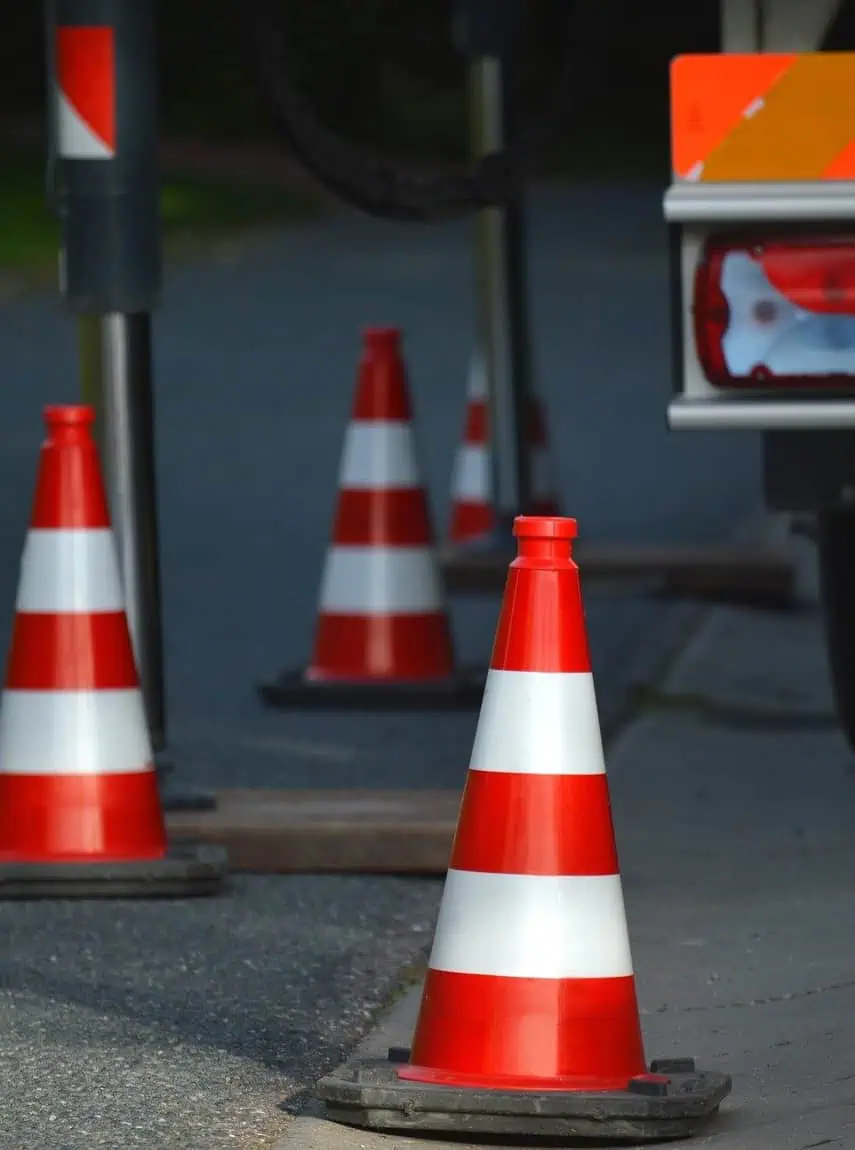Work zones are a common sight on our roads. Even though they are essential for the reparation and development procedures of infrastructure, these zones can bring risks for drivers and workers. The correct safety measures are needed in such areas to avoid unwanted injuries and damages.
Therefore, today, we will discuss traffic management in work zones and how to implement it utilizing best practices, necessary equipment, and proper training courses. First of all, it is necessary to understand the importance of traffic control in a work zone.
Why is Traffic Control Necessary in Work Zones?
Traffic control in work zones is essential for ensuring proper management and preventing accidents. It directs the movement of vehicular and pedestrian traffic in and around construction or work areas to ensure safety and an orderly movement of work.
The chief objectives of any traffic control measures should be protection from accidents, prevention of congestion, avoiding delays, and public awareness.
Traffic control measures should minimize the frequency of accidents, be it for the site workers or passing individuals. They should help maintain a free traffic flow to avoid congestion and delays for road users.
Correct signing and communication are necessary to notify passing individuals about the presence of a construction work area ahead so that they get ready and drive with care.
Factors to Consider to Implement Effective Traffic Control
It is necessary to consider several factors for implementing traffic control measures successfully in work zones. It helps to ensure both safety and effectiveness. Some of the most vital components are planning, coordination, communication, channeling of tools, and flagging operations.
Planning and Coordination
The foremost things to consider are planning and coordination. It involves assessing the work zone, identifying threats and challenges, and then developing a comprehensive traffic control plan accordingly.
Effective Communication
Using highly visible, clear, and well-placed signs and signals to communicate with the drivers and other passing individuals is essential.
Utilizing Channeling Tools
Another vital component to consider is the utilization of channeling devices. Tools like cones, tubular markers, concrete barriers, and barricades help guide the traffic near the work zone securely.
Flagging Operations
Trained flaggers using the standard signs and signals can easily manage the traffic flow around the work zones. However, they must wear clothing that is highly visible from a distance and use vibrant lights and flags to avoid any confusion, traffic congestion, and accidents.
Importance of Training and Traffic Control Courses
Traffic control in work zones is a critical task requiring multiple expertise. Therefore, formal training is necessary. An individual who is going to be involved in it must enroll in a comprehensive traffic control course that covers knowledge and techniques like threat assessment, appropriate utilization of tools, and strong communication.
Standard employee certification is necessary to ensure security and minimize or entirely eliminate the possibility of accidents.
Investing in certification and training improves the confidence of workers and their professionalism. It also ensures their safety. Hence, organizations and institutions need to place great emphasis on traffic control training and courses. It allows them to stay current with industry standards and the latest best practices.
Best Practices for Traffic Control in Work Zones
Along with implementing the traffic control measures, it is equally essential to consider and maximize their effectiveness. Here are the best practices you can use for traffic management in work zones.
Constant Monitoring
Conditions in work zones are dynamic and subject to quick changes. Hence, constant monitoring of the traffic control measures is necessary. It allows real-time adaptations and offers effectiveness even in changing circumstances.
Strong Communication
Effective and transparent communication is essential for traffic control methods to be successful. It addresses effective communication between employees, drivers, and between employees and other people circulating the work area.
Prioritizing Worker Safety
The safety of employees should always come first. It implies supplying the appropriate personal protective equipment (PPE), providing proper training, regular audits and inspections, and promoting a culture that prioritizes safety.
Utilizing Technology
Organizations should leverage technology as technological developments present new chances to enhance traffic management in work zones. Embracing and utilizing technologies like intelligent traffic management systems, real-time monitoring tools, and automated flagging devices can ensure safety and efficiency.
Conclusion
Traffic control measures in work zones can create public awareness, ensure smooth traffic flow, and protect employees and other road users from accidents.
Organizations should consider aspects like developing a comprehensive traffic control plan, effective communication, utilization of channeling tools and technology, and prioritizing training with a great traffic control course. It helps to maintain safety and efficiency at work zones.
Article and permission to publish here provided by Prince Kapoor. Originally written for Supply Chain Game Changer and published on June 14, 2024.
Cover image by Frauke Riether from Pixabay.

